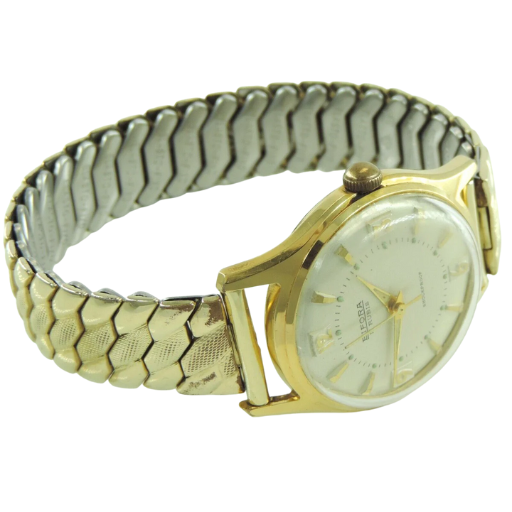The History Of The Bifora Watch Company
The Bifora Watch Company – one of the world’s most respected and beloved watch brands was founded over a century ago in the quaint German town of Pforzheim, Germany. Bifora has a rich history that spans from the early days of pocket watches to the modern era of wristwatches. From humble beginnings, Bifora quickly gained a reputation for precision, quality, and elegance, setting the standard for watchmaking excellence that is still respected today.
In 1900, two German watchmakers, Rudolf Schlenker and Wilhelm Fils, joined forces to create the Bifora Watch Company. The name Bifora comes from the Latin phrase “bi foris,” which means “two doors,” a reference to the fact that the company’s watches featured two covers. The founders had a clear vision for their company: to create timepieces that combined traditional craftsmanship with innovative technology. And they quickly made a name for themselves in the world of horology with their precision and attention to detail.

Bifora’s early years were, of course, marked by innovation and experimentation. The company’s early pocket watches were known for their accuracy and durability and quickly became the best watches on the market. This success was due to its commitment to using the best materials and technology available, such as ruby bearings, to improve the accuracy of the watches. But it wasn’t just the quality of Bifora’s watches that set them apart. The company was also known for its unique designs, which featured intricate engravings, beautiful enamel work, and elegant shapes. These watches became a status symbol for the wealthy and fashionable, and the company’s reputation continued to grow.
Bifora quickly became one of the most respected watch brands in the world. The 1920s and 1930s were a golden era for the company, and it produced some of its most iconic and sought-after timepieces. As the popularity of wristwatches grew, Bifora shifted its focus from pocket watches to wristwatches as well, and its designs became more streamlined and modern. Bifora also made significant contributions to the world of horology during this time, including developing the first stopwatch with a jumping minute hand. This feature is still used in modern chronographs today.
Bifora’s watches became must-have accessories for the fashionable elite, and the company’s reputation continued to soar. However, as the world plunged into World War II, Bifora faced significant challenges, including a shortage of materials and a decrease in demand for luxury goods. After the war, the company experienced a revival.
Bifora made significant contributions to the world of horology, including developing the first stopwatch with a jumping minute hand. This feature is still used in modern chronographs today. They also played a critical role in the evolution of the chronograph, developing several groundbreaking designs that are still used today. The company’s engineers and designers were constantly pushing the boundaries of what was possible, experimenting with new materials and methods to create watches that were not only beautiful but also functional and reliable. Bifora’s commitment to innovation was exemplified by its introduction of the first wristwatch with a waterproof case, which helped revolutionize how people wore and used their watches. This innovation paved the way for the development of modern dive watches and helped establish Bifora as a leader in the industry.
Beyond its technical achievements, Bifora was also known for its elegant and distinctive designs, incorporating intricate details and unique features that set its watches apart. From classic dress watches to bold sports watches, Bifora’s designs were always both timeless and forward-thinking.
Iconic Bifora watches include: the Bifora 115, which was introduced in the 1950s – known for its simple and elegant design, with a clean white dial and Arabic numerals. It was also incredibly accurate and reliable, thanks to its precision movement. The Bifora 313, which was introduced in the 1960s – notable for its unique design, with an asymmetrical case and a distinctive dial layout. In the 70s, the Bifora Rallye was introduced – a watch designed for motorsports enthusiasts featuring a tachymeter scale and a chronograph function, making it the perfect tool for timing laps and measuring speeds. It had a sporty, stylish design, stainless steel case, and colorful dial. Through it all, Bifora is mostly known for its 1951 launch of the very first automatic movement to be designed and produced in Germany. In the heyday of the company, between 1960 and the early 70s, Bifora produced watches in the city of Schwäbisch Gmünd with more than 1,000 employees. Thus Bifora was the largest German watch factory at that time.
The quartz crisis, as it was known, was not kind to the Bifora Watch Company and the manufacturer halted operations. After decades of dormancy, however, in 2014, Bifora was revived. The new Bifora watches are an ode to the classic designs that made the brand famous in the 20th century. Their watches perfectly blend tradition and modernity – classic designs fused with the latest technology. And today, Bifora is once again a respected name in the watchmaking industry.

